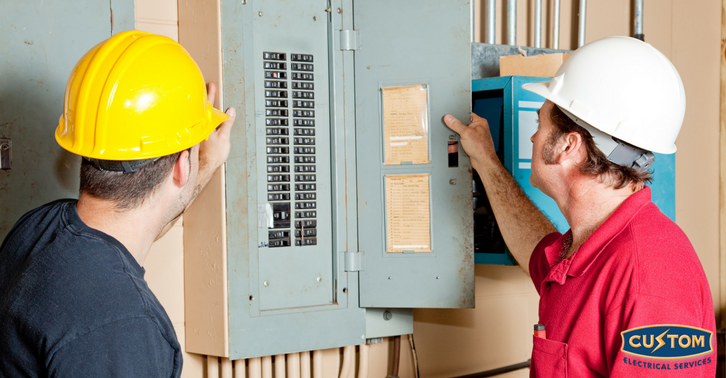
Circuit Breakers and Why We Need Them
You may be wondering why we need to split up circuits the way we do. If all of our devices operate on 120 volts, why do we need separate circuits? The answer has to do with the physical quirks of wiring. You see, while everything operates off of the 120 volts delivered by your home’s wiring, the power demands are different for each device. As power is applied to a circuit, current flows over the wiring and heats it up. The higher your power demands, the more current is flowing through the wires.
The wires in your home can only handle a set amount of current (most circuits are 20-amp circuits) before they overheat and begin to ignite insulation around them. If you placed every light, appliance, and TV in your home on the same electrical circuit, you’d reach this thermal limit almost immediately. To prevent his, we install circuit breakers to help separate energy demands to specific rooms. We also separate the energy load to create special appliance circuits. This is why your HVAC unit is on a separate circuit from your kitchen and your laundry room. Appliance circuits use thicker wires which are designed to handle higher electrical loads. High current circuits are expensive, so homes are designed to use them sparingly.
This is also why you should only ever replace breakers and fuses with new units that have the same tolerance. Circuit breakers are designed to be the weakest link in a system. They must trip before anything on the circuit itself would fail. This safety feature means that the breaker will trip before wiring overheats or appliances are damaged by high-current draw. If you do need to replace a breaker, always match it with the same current-rating.
Power surges are another reason we separate circuits in a home. Whenever a load is applied to the system (you turn on a hair dryer, electrical appliance, or even a lamp) inrush current is also applied. Inrush-current is the initial surge of power that occurs when current is increased. Extra power is applied across the system, which causes a risk of electrical damage when a high-power device is applied to a low-power circuits. To mitigate this, high-load motors such as those in power tools, HVAC systems, and other appliances are plugged into special appliance circuits. This is also why you should plug sensitive low-voltage electronics into surge protectors.
When Do I Need to Replace My Circuit Breaker?
Sometimes electrical panels can wear out. While the signs are clear when you know what to look for, without experience you have no way of knowing if it’s time to replace your panel. Get an inspection for your electrical panel if:
- Your electrical system hasn’t been inspected in more than 15 years
- Your breakers trip frequently
- You hear loud buzzing during regular operation
If, however, you happen to notice one of two logos, Federal Pacific Electric (FPE) or Zinsco, you should call for a replacement immediately. These older models of electrical panels are unsafe and should be replaced quickly.
For the best in quality electrical repair work and installations, contact the professionals at Custom Electric! Be sure to check back here each week for helpful advice, news, and guides or follow us on Facebook and Twitter!



